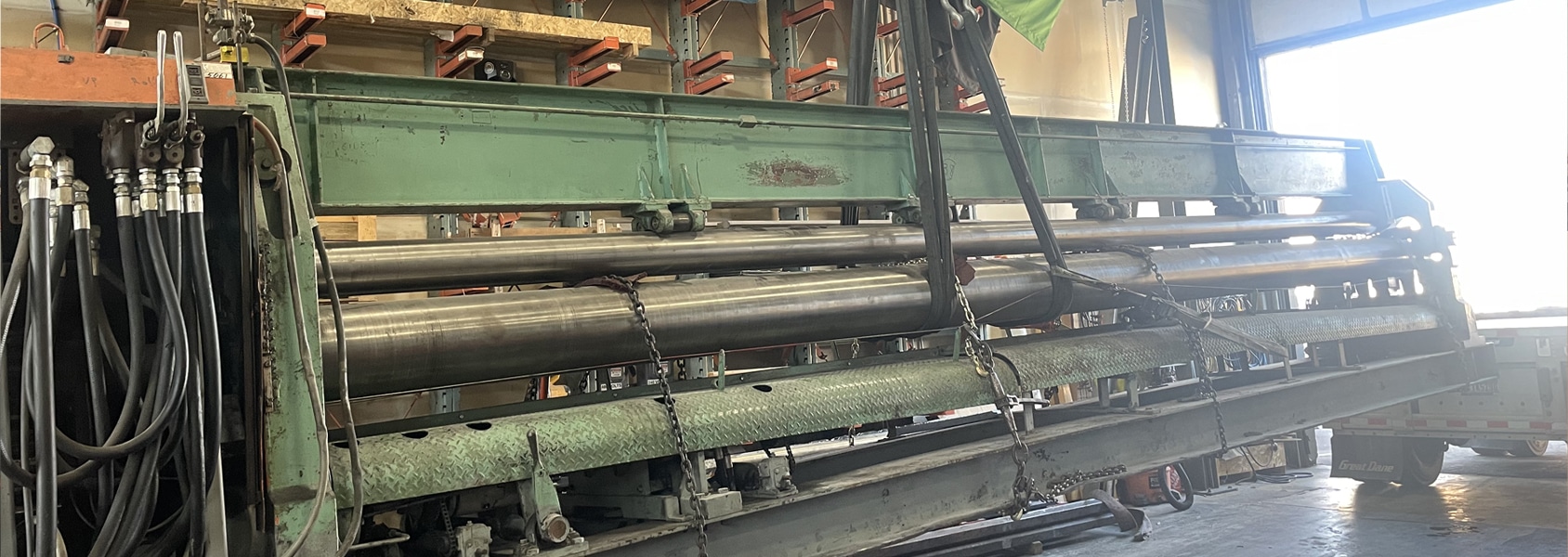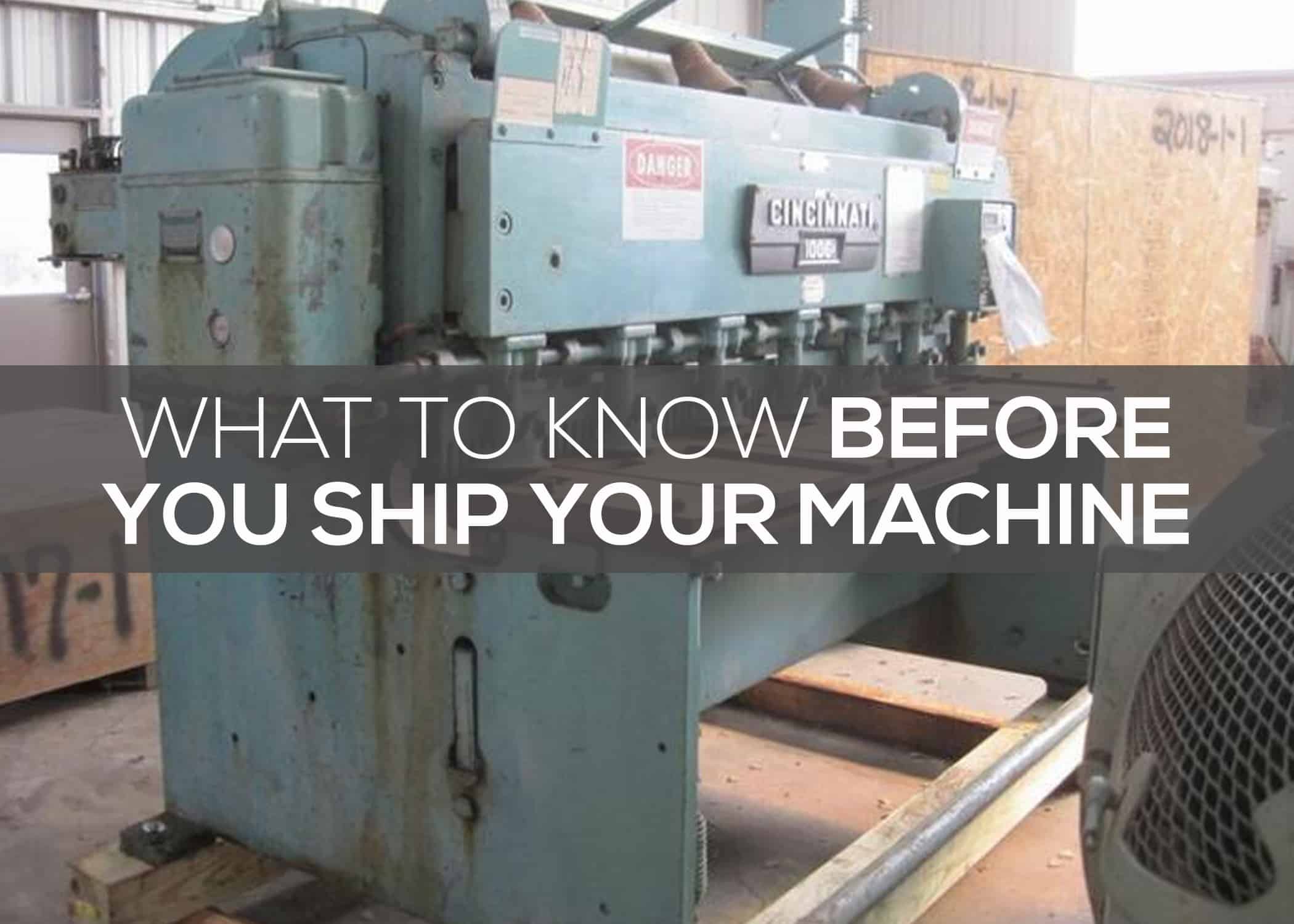Not Quite the End of the Sale
You’ve finally sold your old ironworker or metal-cutting shear through a want ad or an online auction service. You breathe a sigh of relief and take a casual stroll back into your shop only to see the machine still sitting there in its old spot. You realize that the work of selling it is far from being finished—until it is shipped safely sitting in its new home with its new owner you won’t really be able to relax and start counting your money.
Before the Sale
Once the truck is rolling away with your old machine loaded on it you may feel that all is well with the world, but your mood will certainly take a nosedive should the equipment wind up being sent back because the buyer felt some critical information hadn’t been disclosed.
As grandma used to say, “Honesty is the best policy,” and many a metalworker has been on the receiving end of a deal that didn’t go quite the way the other party promised. Lack of integrity in professional behavior has a way of coming back to haunt people in any business.
Deliberately overcharging on a job can be a forgivable offense in the world of metal fabrication, especially if you have a chance to make it up to your customer in future work. Sell a flawed piece of equipment, however, and you might wind up with a reputation in the local industry that’s difficult to shake. Someone somewhere has a specific need that your machine can fill, so don’t gloss over its problems when you advertise it and especially when you meet a potential buyer in person. Full transparency before the sale can prevent a long-term grudge following it.
Some other wise practices regarding a machine that you might eventually sell include the following:
- It’s always prudent to keep a metalworking machine in good repair, even if you’ve decided not to retain it in production any longer. Like the cat in the old English proverb, machine tools and fabrication equipment can easily have nine lives, getting refurbished and put back in service again and again. Always maintain your equipment with an eye to its eventual resale value.
- Throughout the life of your machine, you should be keeping track of the total hours of operation as well as recording a detailed maintenance log. When you sell the machine, keep a copy of both on file should you ever need to reference them, but be sure to send the originals with the machine. Not only will the new owner appreciate such a comprehensive history of his new asset, but if there is some issue with the machine that you forgot to mention—whether accidentally or intentionally—and the buyer brings it up later, you can rightly point out that it was listed in the documentation that you sent.
- Keep the machine manual in good condition and send it along with the equipment when it’s sold. If you’ve lost or never received a manual, it’s a good idea to check if there’s one online that you can download for free and print out. Even if your own staff don’t make much use of it, the next owner could be very grateful to find it included with the machine.
- Unless you’re just listing the machine briefly prior to scrapping it or are planning to sell it “as is, where is,” make the effort to give it a thorough cleaning prior to advertising it for sale. Not only will it enhance its appearance in the ad photos, but the eventual buyer will also have a better first impression of the machine once it arrives at their facility.
Photograph the Packing and Loading of the Machine
Start taking photos of the machine as soon as it’s sold so that you can document the condition that it’s in from that moment until the truck pulls away. At every step of the wrapping, crating, and mounting on pallets, photos and even videos should be shot of each component that’s being shipped. While the equipment is being loaded on truck or trailer, strapped in place, and tarped or otherwise prepared, you should be making a visual record. Should your machine succumb to freight damage of any kind, you can provide the proof that it left your shop in pristine condition (for a used machine, that is).
Dimensions and Weight
You need to record accurate information of your machine’s size and weight for the sake of the new owner. In addition, you must also provide to the transport company the exact weight and measurements of each individual piece of the equipment and accessories as they are prepared for shipment, accounting for the increased dimensions and added weight of pallets and other packaging material. Separating out shipments onto different pallets allows the driver to adjust the load by size and weight to better fit and balance the truck or trailer.
Rigging
Shipping a machine isn’t just about the truck transporting it—it involves some sort of rigging at each end of the journey to get the machine to and from the truck and where it was or will be sitting in a shop. Unless you can load the machine yourself, you will need to hire riggers to bring in cranes or other equipment to get it placed for transport. Time and a lot of money will be wasted if the truck and the riggers aren’t scheduled and guaranteed to be at your location at the same time.
While the need for rigging on the receiving end is the responsibility of the purchaser, you still should coordinate with them so that they know what is needed and arrange for it. If the truck is meeting a rigger there, the transport company needs to know about those arrangements, too.
The Paperwork
If the shipping paperwork isn’t filled out, your machine isn’t going anywhere, and if it’s filled out wrong, it may wind up in a different location than you expected. Take the time to properly fill out all the paperwork in detail, both for the sake of an uneventful delivery, as well as a protection in case of any legal or technical issues down the road with either the transportation company or the buyer.
The information that you need to provide on the bill of lading includes:
- The number of pieces.
- A detailed description of what each piece is/contains and if it is loose, palleted, crated, etc.
- The dimensions and weight of each piece.
- The load value of the entire shipment.
- Any special instructions for handling (including warnings if a piece is top heavy or has other movement considerations).
- Accurate addresses for both pickup and delivery.
“Goodbye, Old Clunker…”
Shipping an old machine can become a little more stressful than selling it, but with the right preparation and careful attention to detail, it can turn into a satisfying conclusion to your association with your old metalworking equipment.
Take the time soon to look over every machine in your shop—as well as each future acquisition that arrives—and make a brief note of what you will need to do to prepare them in anticipation of the time when they are eventually retired from their lives of service to you.







